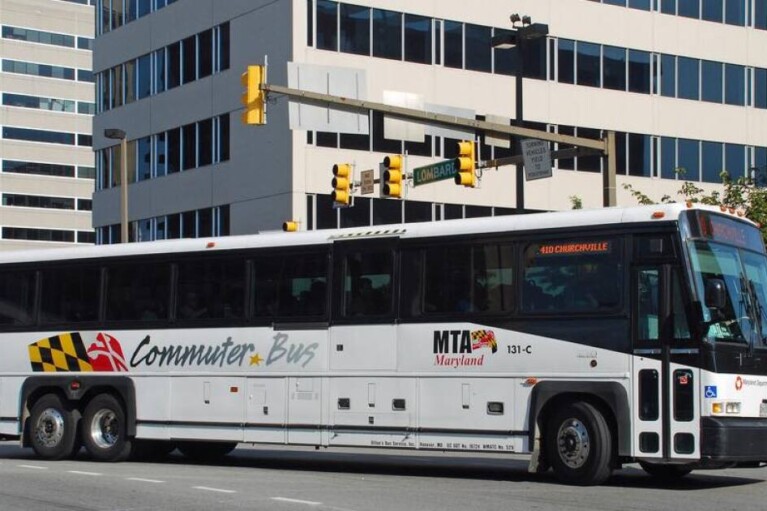Last week the Texas Transportation Institute released an update of its Urban Mobility Report, which always gets a lot of attention because of how it claims to quantify the cost of congestion and how much time commuters waste sitting in traffic every year.
Predictably, this leads to calls for more roads and wider highways to “relieve congestion.” But this is 100% the wrong conclusion – and TTI’s own data proves it.
First, we should point out that the TTI congestion report has many expert critics who point out some critical flaws in its methodology and general framing around congestion. You can read a quick explainer here, as well as more detailed critiques here and here.
But let’s concede that people are driving more and congestion is bad. Does this mean, as AAA Maryland implies, that the solution is to build more roads and widen highways?
No, that won’t work and has never worked. And you can actually see this in TTI’s own data or rather, you used to see it in their data until they stopped including it in the report.
Here’s how: Let’s go back to the 2012 Urban Mobility Report and look at the spreadsheet of the data they used for the report. (It doesn’t seem to be on TTI website anymore, but we downloaded it back when it was released. We’ve posted it online here.)
In the spreadsheet, TTI reports a number of data points from 1982 through 2011, including population, vehicle miles traveled, hours of delay, etc. They still report most of these throughout all the updates they have done.
However, there is one thing that they don’t report any more: number of roadway lane miles. Why would they stop reporting that?
Maybe because it undermines the case for widening highways.
For example, in the Baltimore region, between 1982 and 2011 the region nearly doubled the amount of freeway lane miles (from 885 lane miles to 1,561 lane miles). During that same time, the region’s population grew from 1.7 million to 2.5 million – a 48% increase.
Freeway expansion far outpaced population growth, but it did not relieve traffic congestion. In fact, by every measure congestion got worse. The amount of congested lane miles increased from 31% to 58%. The annual hours of delay per auto commuter quadrupled, from nine hours a year to 41 hours a year. And the annual cost of congestion increased from $96 million per year to $1.5 billion per year.

Brian O’Malley
Growth in highway lane miles significantly outpaced population growth and yet, congestion got worse, not better. Why? Because more lane miles, and the accompanying auto-dependent suburban and exurban development that results, just meant people were forced to drive more. What other options did they have? In Baltimore, we haven’t built any new high quality, rapid transit since the Light Rail opened in 1992!

Eric Norton
And this pattern happens in metro regions across the country. For decades, study after study has found that expanding road capacity encourages more people to drive which, in as little as three to five years, soaks up that added capacity.
The most recent study to come to this conclusion was released just this year and found that a 1 percent increase in lane-miles induced a 1 percent increase in vehicle-miles traveled (VMT) – a one for one correlation. Moreover, after just five years the short-term increases in speed are wiped out and congestion returns to pre-project levels.
The evidence of this “induced demand” is so overwhelming that it is sometimes called the “Fundamental Law of Road Congestion.” A policy brief from the National Center for Sustainable Transportation titled “Increasing Highway Capacity Unlikely to Relieve Traffic Congestion” summarizes findings from over a dozen research papers found:
- The quality of evidence linking highway capacity to increased VMT is high;
- Increased capacity induces additional VMT in the short run and even more in the long run; and
- Capacity expansion leads to a net increase in VMT, not simply a shifting from one road to another.
Increasingly, transportation professionals and departments of transportation around the country are recognizing this and responding accordingly. For example, the Colorado Department of Transportation (CDOT) has admitted that “simply accommodating more cars won’t work.” Shoshana Lew, head of CDOT said, “We are not going to be able to build our way out of congestion on a corridor where 85 percent of a growing population lives. The math just doesn’t work.”
The truth is there is no magic bullet to fix congestion. But there are ways we can lessen our dependence on cars and reduce the amount of time we spend in them. Mixed-use, in-fill development that brings jobs and residents closer together. Fast, frequent, and reliable transit service that connects to job centers. High-quality, separated bike facilities that make biking a true mobility option for everyone, not just those willing to risk their bodies riding with vehicular traffic.
No one wants to spend more time in traffic. We all want to spend less time on the roads and more time with our families, friends, and neighbors. But widening highways won’t give us that time. And that’s the real kicker with promising to fix congestion with wider roads; in reality, it condemns us to spend more time in our cars, not less.
— ERIC NORTON AND BRIAN O’MALLEY
The writers are, respectively, director of policy and programs and president and CEO of the Central Maryland Transportation Alliance.




 Creative Commons Attribution
Creative Commons Attribution